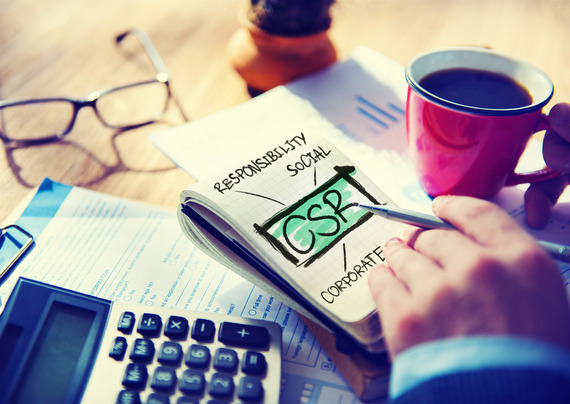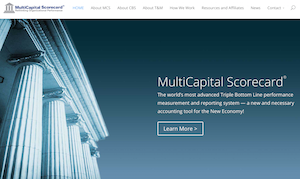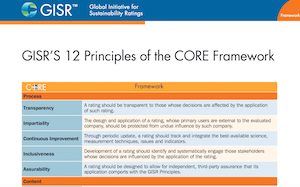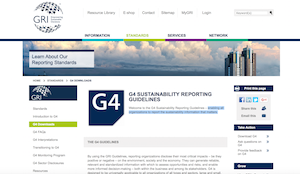Talk is plentiful in the world of corporate sustainability — companies engaged in triple bottom line activity often go to great lengths to make sure everyone knows about what they are up to.
Often, this communication comes in the form of press releases and corporate sustainability reports, which flood the web in a seemingly endless stream.
While these reports and public relations activities serve an important purpose in educating stakeholders about a company’s sustainability efforts, they are not always an effective tool for objectively measuring action.
That’s to say that while there’s plenty of “talk,” means for measuring the “walk” are a lot less obvious.
However, a slew of new tools on the market are making it easier for customers, investors, regulators and other stakeholders to better understand a company’s sustainability efforts.
The MultiCapital Scorecard
The MultiCapital Scorecard claims to be the world’s first triple bottom line performance measurement and reporting system — it is a quantitative, multiple capital accounting system that is also science- and context-based.
The tool can tell us if a company’s operations are socially, environmentally and economically sustainable, while also helping companies to specify what their own impacts on vital capitals would have to be in order to be sustainable.
“More than anything else, the MultiCapital Scorecard is intended to serve as a management information system for use by managers and directors of organizations — a Triple Bottom Line dashboard, if you like,” said Mark McElroy, founder and executive director of the center for sustainable organizations and co-founder of Thomas & McElroy LLC, which created the MultiCapital Scorecard.
“As we gradually move away from monocapitalism, or performance assessed by our impacts on economic capital only, to multicapitalism, or performance assessed by our impacts on multiple capitals, this kind of reporting will become increasingly more important, even essential.”
The MultiCapital Scorecard covers all aspects of the triple bottom line, and quantifies performance in terms of impacts on multiple vital capitals. It is a context-based measurement and reporting system that assesses performance relative to organization-specific standards for what their performance would have to be in order to be sustainable.
In other words: the tool is designed to be flexible, rather than relying on a one-size-fits-all set of metrics. It first determines the areas of impacts that are material to an organization in its own context, and then evaluates capital-, science- and ethics- based metrics to assess their performance in those terms.
The MultiCapital Scorecard also serves as tool for reporting triple bottom line performance to other stakeholders, including employees, owners, suppliers and other trading partners, regulators, NGOs and communities at multiple levels of scale.
GISR CORE program
The current $250 million sustainability information market includes some 150 rating systems covering more than 50,000 companies on about 10,000 performance metrics, according to the Global Sustainable Investment Alliance.
 This endless stream of information has led to what some in the industry call “survey fatigue,” which makes it difficult for business leaders and investors to know what to do with it all. It can be even more difficult for non-initiated prospective clients or consumers to decipher who’s doing what to help or hurt the planet.
This endless stream of information has led to what some in the industry call “survey fatigue,” which makes it difficult for business leaders and investors to know what to do with it all. It can be even more difficult for non-initiated prospective clients or consumers to decipher who’s doing what to help or hurt the planet.
To cure survey fatigue by helping companies and investor groups cut to the center of numerous sustainability research and ratings, the Global Initiative for Sustainability Ratings (GISR) last year launched the Center for Ratings Excellence (CORE) program.
“Our goal for CORE is to drive this market to $1 billion,” Mark Tulay, chief operating officer of GISR, told GreenBiz. “It will help drive market adoption among investors, bring market clarity, drive excellence and also the enhanced usage of financially relevant ESG factors in investment decision making.”
GISR aims to make sustainability intelligence more intelligible for businesses and investors by breaking the subject down into four “strategic workstreams” tailored to different reasons a user might be seeking ESG data: a framework for how to evaluate sustainability progress; an online research hub; a lab focused on new data and reporting innovation; and an events section to help convene those working on common issues.
GRI G4 Guidelines
The Global Reporting Initiative’s G4 Guidelines are designed to enable all organizations to report the most important sustainability information — both positive and negative. It is designed to be universally applicable to all organizations of all types, sectors and sizes worldwide.
GRI’s approach is based on multi-stakeholder engagement — that is, all framework elements are created and improved using a consensus-seeking strategy, and considering the widest possible range of stakeholder interests. GRI’s geographically diverse stakeholder input increases the legitimacy of the framework, and its basis in multi-stakeholder engagement contributes to its ability to unite and mediate relations among actors and sectors, including business, the public sector, labor unions and civil society.
Each year, more and more reporting organizations adopt GRI’s Guidelines. From 2006 to 2011, the yearly increase in uptake ranged from 22 to 58 percent.
CSRHub
What if you wanted to compare Apple’s environmental track record with Google’s? Or maybe two food giants completing a merger, such as Kraft and Heinz?
Good news: You can do exactly that with CSRHub’s online corporate sustainability assesment tools covering more than 15,000 companies.
“It’s a way for people to say, ‘This is how I’m being judged in the marketplace,'” Cynthia Figge, CSRHub co-founder and COO, told GreenBiz in an interview last year. “If there’s anything on a company, we’re going to have it.”
CSRHub pulls millions of data points from hundreds of ratings agencies and other groups to provide business intelligence information that is then combined to give a series of scores in core CSR areas. The company operates on a subscription model and is registered as a B Corporation.
This article has been taken from here.
